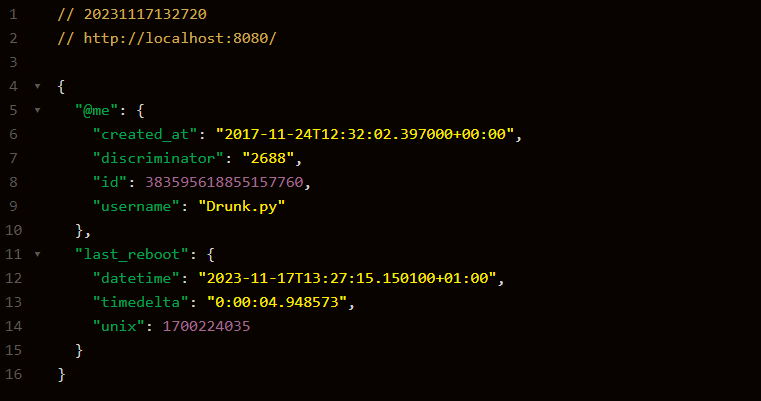HTTP backend¶
The HTTP backend is a simple HTTP server that listens for incoming requests and manages all the communication received by Discord HTTP POST requests. However since this is essentially based on aiohttp, you are free to intervean and add your own componenets to the server.
from discord_http import Context, Client
client = Client(
token="Your bot token here",
application_id="Bot application ID",
public_key="Bot public key",
sync=True
)
With this simple code, you have the ability to interact with aiohttp API using client.backend.
If you need help with aiohttp, please refer to the aiohttp documentation.
Essentially you are able to add your very own paths to the server.
By default, the library adds a GET and POST listener to / of the domain` (aka. the root of the domain).
The POST is responsible for handling all the incoming requests from Discord
(We STRONGLY recommend you do not change the default behaviour of this, unless you know what you are doing).
GET is used for you to verify that the bot is online and working, which shows a simple
debug information about your bot and nothing more.
GET Path¶
By default, the library provides you with a debug GET path that you can use to verify that the bot is online. It shows something like this when accessing it through your browser or any other tools:

If you want to as well, you could theoretically make this a way to show your bot being online, by having your main website ping this source and then be able to see if the bot is online or not.
Don’t like the default behaviour, you can simply change it by doing the following:
client = Client(
...
disable_default_get_path=True
)
Instead of then showing the default JSON value in there, it will then instead return HTTP 405: Method not allowed.
Adding paths¶
A very simplified example of how you can add your own paths to the server. Keep in mind that there are many more methods, but this is just a simple example. Code example will be taking the code above as an expantion of the code.
from aiohttp import web
async def simple_test(request: web.Request) -> web.Response:
return web.json_response({"hello": "world"})
client.backend.router.add_get(
"/test", simple_test
)
This code would essentially add a new path to the server called /test that
returns a JSON response with the key hello and the value world.
Of course you can do much more than this, but this is more of an idea of what you could do.